Joshua 15:1 – The allotment for the tribe of the people of Judah according to their clans reached southward to the boundary of Edom, to the wilderness of Zin at the farthest south.
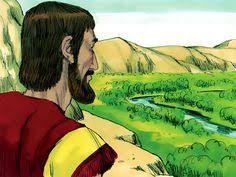
Welcome back, readers! The book of Joshua can be divided into two sections. The first part tells us how God worked with his people to bring them into the Promised Land and helped them take possession of it by defeating the Canaanites.
The second section of the book goes into great historical detail about the division of the land and the inheritance of each tribe. As we noted in our last post, the allotment of each tribe was determined by both lot and council.
The lot was determined by God and it designated the general location of each tribe within the land. In other words, it determined which tribes would be by the Mediterranean Sea, which would be near the southern desert, which would be high in the mountains, etc.
After that determination had been made, a council determined the exact borders of each tribe, based on the number of people in the tribe and other factors. We also noted that the council was made up of a priest (Eleazar), Joshua, and one representative from each of the tribes who were going to inherit land west of the Jordan. These men had been hand-picked by God before Israel ever even entered the land.
The tribe of Judah is the first to be assigned their inheritance. The details are recorded here in chapter 15.
Joshua 15:2-4 – And their south boundary ran from the end of the Salt Sea, from the bay that faces southward. It goes out southward of the ascent of Akrabbim, passes along to Zin, and goes up south of Kadesh-barnea, along by Hezron, up to Addar, turns about to Karka, passes along to Azmon, goes out by the Brook of Egypt, and comes to its end at the sea. This shall be your south boundary.
I want to begin by saying that our study is NOT going to involve an intricate study of each and every city mentioned in the text. There are two main reasons for this.
First of all, that is an exercise that would best take place in a classroom setting, where detailed maps could be seen by all. But even in that environment this is a most difficult task, as numerous changes have taken place between then and now.
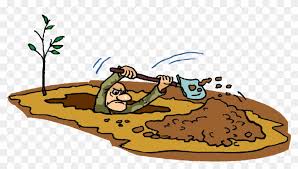
Many of the ancient towns and villages had their names changed when ownership/possession changed. Other cities have been obliterated and lie buried beneath thousands of years of dirt and rubble with nothing to show where they were once located.
And to make things even harder, we have many instances where multiple cities adopted the same name, making it extremely difficult to pinpoint the exact locations of all the cities named in our text. (Nevertheless, it should be noted that we can identify enough of the cities and/or ruins to confirm the truth of the scriptures.)
Secondly, unless you are a professional bible scholar, that kind of detailed study won't bring you joy or bear a lot of spiritual fruit in your life. Realistically speaking, it would be much more likely to cause you to fall asleep!
So instead of attempting to delineate the exact borders for this tribe, we will give a general description of its location. If you want a more detailed study, you can find many wonderful maps and resources online.
The tribe of Judah occupied the southern-most portion of the Promised Land. We know this because the description of the southern border of Judah given in Joshua 15 corresponds to the description of the southern border of the entire Promised Land, as detailed in Numbers 34:3-5.
Its southern border began next to the Salt Sea (the Dead Sea) and ran west all the way to the Mediterranean.
Joshua 15:5 – And the east boundary is the Salt Sea, to the mouth of the Jordan. And the boundary on the north side runs from the bay of the sea at the mouth of the Jordan.
Judah's eastern boundary was determined by water – it began at the mouth of the Jordan River and extended southward down the length of the Salt (Dead) Sea.
Joshua 15:6-8 – And the boundary goes up to Beth-hoglah and passes along north of Beth-arabah, then the boundary goes up by the Valley of the Son of Hinnom at the southern shoulder of the Jebusite (that is, Jerusalem). And the boundary goes up to the top of the mountain that lies over against the Valley of Hinnom, on the west, at the northern end of the Valley of Rephaim.
These verses mention two important places which are found elsewhere in the scriptures:
Jerusalem: We are all familiar with Jerusalem, the capital city of Israel. Its original Canaanite name was Jebus after the Jebusites who built it. Jebus was actually located on the boundary between the tribes of Judah and Benjamin, on the summit of two rocky hilltops.
One of the hills was called Zion, which is why Jerusalem is also sometimes referred to as the city of Zion. This is a natural place for a fortified city because it is surrounded by ravines on three sides.The city actually extended to the next hill/mountain top called Mount Moriah, where the temple was eventually built by King Solomon.
Although each tribe (Benjamin and Judah) probably attacked the city of Jebus numerous times, neither one was able to fully drive out the Jebusites (Joshua 15:63, Judges 1:21). As a result, the strong hold of Jebus remained in the hands of the Canaanites until the time of David. After he conquered the city, he renamed it Jerusalem (city of peace/possession of peace) and made it the capital city of Israel.
Once David made the city Israel's capital, he also moved the tabernacle to that location. Later, David's son Solomon built a permanent (and very lavish) temple for the Ark of the Covenant, which was where God's presence dwelt. The temple was so incredible that it took seven full years to build it!
I Kings 6:37-38 – In the fourth year the foundation of the house of the Lord was laid, in the month of Ziv. And in the eleventh year, in the month of Bul, which is the eighth month, the house was finished in all its parts, and according to all its specifications. He (Solomon) was seven years in building it.
You can read all the details of the building in I Kings chapter 6.
Unfortunately, Jerusalem did not remain in the hands of the Jews forever. Because the Jews cast God aside and worshiped false idols, God sent them into exile. This occurred in 586 BC. At that time, the city and the temple were both destroyed by Nebuchadnezzar, king of the Babylonians.
After 70 years the captivity ended and the city and the temple were eventually rebuilt during the time of Nehemiah, although they had none of their former splendor.
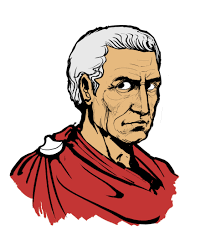
Hundreds of years later, during the time of Jesus, Jerusalem was ruled by the Romans. Herod the great, king of Judea, had invested enormous sums of time, labor and money remodeling the temple in hopes of winning political support from the Jews. For this reason, it is sometimes referred to as Herod's temple.
However, all his efforts were for nothing. Eventually the Jews rebelled against him anyway and during the insurrection, Titus and his troops destroyed both Jerusalem and the second temple. These events occurred in 70 AD.
Although the city recovered and still thrives today, the temple was never rebuilt. Nevertheless, we know that one day it will be, because a third temple will be in place during the great tribulation period, spoken of in the book of Daniel (Daniel 11:1).
Valley of Hinnom: This valley was a deep and narrow ravine on the south side of Jerusalem. Its name means 'son of Hinnom'. It was probably named after a hero among the Canaanites, although we know nothing about him or his exploits.
During the era of the kings, an evil image of the pagan god Molech (the god of the Ammonites) was set up in this valley. King Ahaz, King Manasseh and many of the common Jews sacrificed their children to this demonic power (II Chronicles 28:3, II Chronicles 33:6, Jeremiah 7:31-32).
The image was set up on a particular spot within the valley which eventually became known as Tophet (Hebrew for timbrel) because drums and/or percussion instruments were constantly played there to drown out the screams of the dying children.
When Josiah (one of the few righteous kings) came to power, he purged Israel of almost all idol worship. He desecrated the valley and tore down the image of Molech, so that no more children could be sacrificed there (II Kings 16:1-15).
From that point forward, the valley of Hinnom became the common cesspool for the city. Raw sewage was pumped there and eventually it was carried off by the waters of the Kidron River.

The valley was also used as a public cemetery. The fortunate were buried in tombs cut out of the mountainside. The bodies of criminals and dead animals were often simply dumped there without any burial at all. However, this wasn't much of an issue since the valley also served as the general garbage dump for the city.
Fires were kept constantly burning there in order to try and consume anything combustible. Wild dogs often scavenged there. Can you picture the constant fires, the rotting bodies and the swarms of insects and worms? Can you imagine the smell? All in all, it was a place of horrors. No Jew could enter it without becoming ceremonially unclean.
The Jews associated this valley with two clear ideas. One was the suffering of the victims (children) that had been sacrificed there. The other was perpetual filth and corruption. Thus, the valley of Hinnom eventually became a symbol of destruction and punishment – the place of the wicked/damned which burned with perpetual fire.
The Hebrew word 'Hinnom' is translated as 'Gehenna' in the New Testament (because the New Testament was written in Greek). Both words are translated as 'hell' in our English bibles. Thus, we have a picture of hell as a stinking, fiery place of death, destruction and perpetual despair. The word is used in the context of future punishment by Jesus himself on several occasions (Matthew 23:33, Mark 9:43 &45, Luke 12:5, etc).
As you read through the Old and New testaments, you will certainly see multiple references to Jerusalem as well as Hinnom/Gehenna or hell.
Joshua 15:9-12 – Then the boundary extends from the top of the mountain to the spring of the waters of Nephtoah, and from there the boundary comes to an end at the sea. And the west boundary was the Great Sea with its coastline. This is the boundary around the people of Judah according to their clans.
Verses 9-12 mention a number of cities and landmarks, but the end result is that the southern boundary of the tribe of Judah ended at the Mediterranean Sea, while the coastline of the sea was Judah's western boundary.
Joshua 15:13 – According to the commandment of the Lord to Joshua, he gave to Caleb the son of Jephunneh a portion among the people of Judah, Kiriath-arba, that is, Hebron (Arba was the father of Anak).
In verses 13-19, we have another reference to the special request that Caleb made back in chapter 14. As you recall, Caleb and the elders of the tribe of Judah approached Joshua about a promise that was made to Caleb 45 years earlier.
At that time, Moses told Caleb that because of his faith in God, he would eventually win a victory over the giants that lived in Hebron and he would inherit the city and its surrounding land as his own possession.���
As we saw in chapter 14, Joshua listened to the claim of Caleb and ruled in his favor. This is exactly what we would expect, since Joshua was present on the occasion in question and he no doubt fully remembered the promise.
Joshua 15:14 – And Caleb drove out from there the three sons of Anak, Sheshai and Ahiman and Talmai, the descendants of Anak.
The scripture gives us the names of four giants, however, there were likely many more than just four.� Each of the men listed in this verse were chiefs - the heads of families or branches of families within the race of Anakim.� Therefore, it is almost certain that there were many more giants than just these four.�
Regardless of the number, Caleb and the men of Judah were successful in driving the giants from Hebron and its surrounding territories. Their success was based on working hand-in-hand with God and their utter dependence on him:
Joshua 14:12 - Now therefore give me this mountain, of which the LORD spoke in that day; for you heard in that day how the Anakim were there, and that the cities were great and fortified: if so be the LORD will be with me, then I shall be able to drive them out, as the LORD said.
It is perfectly clear that Caleb and the men of Judah defeated the Anakim. In fact, we have an almost verbatim record of their victory in Judges 1:10-15. This second account in the book of Judges raises some questions among scholars. Let me explain.

As you recall from one of our earlier posts, the writers in the ancient east did not always present information in chronological order. Instead they grouped similar or related events together. This is where the question arises.
The events in the book of Joshua occurred during the conquest of the land. Since one record of Caleb's victory is listed here, the assumption is that he drove the Anakim out of the land during that period of time.
However, the book of Judges deals with events that occurred years later - after the death of Joshua. Since Caleb's victory is also listed there (almost verbatim) this raises the question of when he defeated the giants.
Commentators have offered various theories in answer to this question:�
- One theory says that Caleb defeated the giants and their offspring during the conquest of the Promised Land.� Those who believe this theory claim that the writer of the book of Judges was using some of the same source materials as the writer of Joshua, and he included this event in his writing because it was pertinent to his overall subject matter.� (Some of the prominent themes of Judges include Israel's need for godly leaders, the importance of God's law as our standard for living, faith in God's promises, God's faithfulness to his people, etc).�
- A second theory says that Caleb did not defeat the Anakim until after the death of Joshua, which means that the victory in Hebron actually occurred during the era of the judges.� This theory maintains that Caleb's victory was recorded in the book of Joshua because it was historically and geographically linked to the conquest of the land, even though it took place years later.
- A third theory says that conquering Hebron and defeating the Anakim was a two-step process.� Those who believe this theory say that during the initial conquest of the land, Caleb 'chased away' or 'drove out' enough of the giants for him to occupy Hebron.� However, the giants returned and re-took the city.� Then, after the death of Joshua, Caleb and the men of Judah once again conquered the city and at that time, they put the giants to death.
Regardless of which theory you believe is correct, the end result is the same – Caleb believed the promises of God and stepped out in faith to battle the giants. As he did, God gave him the victory!
Joshua 15:15 –And he went up from there against the inhabitants of Debir. Now the name of Debir formerly was Kiriath-sepher.
After his victory at Hebron, Caleb went to war against the Canaanites in Debir.� Although there were actually three different cities of that name, Caleb was fighting with the one that was about 10 miles south of Hebron.�
Debir was also referred to as 'Kirjath-Sannah' which means the city of law/city of sacred learning. And Debir had a third name as well - 'Kiriath-sepher' which means 'book city'. This city is believed to have been an ancient seat of Canaanite learning. It may have had a university or a famous library which contained a depository of the sacred books of the Anakim.
Joshua 15:16-17 – And Caleb said, "Whoever strikes Kiriath-sepher and captures it, to him will I give Achsah my daughter as wife." And Othniel the son of Kenaz, the brother of Caleb, captured it. And he gave him Achsah his daughter as wife.
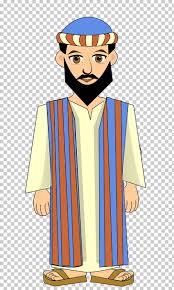
In ancient Israel, the fathers assumed the absolute right to choose a marriage partner for their children.� There are many examples of this in the Old Testament, although capturing a city was not always a requirement for marriage!
From Caleb's point of view, this public offer was a sound decision. It would ensure that the future husband of his daughter was a strong and courageous man. It also meant that his future son-in-law knew how to hear the Lord and follow him, because that was the only way anyone could defeat the fortifications of Debir.
Scripture tells us that the man who was successful was the brother of Caleb. In the Old Testament, 'brother' was a generic term that meant 'close male relative'. Those who have traced the family lines tell us that Othniel, son of Kenaz was actually Caleb's nephew. This meant that Achsah married one of her cousins, not an elderly uncle.

Interestingly, God not only used this circumstance to bless Othniel, he also used it as a training exercise. In the book of Judges, we find that after the death of Joshua, the Israelites abandoned the Lord and served false idols. For this reason, God allowed them to be oppressed by a foreign power. When they repented and sought the Lord, God used Othniel to deliver them. He was the very first judge of Israel (Judges 3:7-11).
Joshua 15:18-19 – When she came to him, she urged him to ask her father for a field.� And she got off her donkey, and Caleb said to her, "What do you want?"� She said to him, "Give me a blessing.� Since you have given me the land of the Negeb, give me also springs of water."� And he gave her the upper springs and the lower springs.
The day came when it was time for Achsah to leave her father's house and be the wife of Othniel. As she was leaving, she unexpectedly dismounted her donkey and approached her father. Caleb could see that she clearly had something on her mind, so he asked her what she wanted.

She acknowledges that her father had given her 'land in the Negeb'. This means Caleb gave the couple a parcel of land which had a southern exposure. As such, it was comparatively arid and barren. Therefore, she asked her father to also give her the adjoining parcel, which had a spring of water on it. This would make all of their land fruitful and valuable.
Caleb not only grants her request, he gives her twice as much as she asked for - he gives her both the upper and lower springs.
This is a picture of the generosity of God.� If earthly parents are ready and willing to bestow good gifts on their children, how much more will our heavenly Father do for us?� The apostle Paul discusses this very idea in the book of Romans:
Romans 8:31-32 – What shall we then say to these things? If God be for us, who can be against us? He that spared not his own Son, but delivered him up for us all, how shall he not with him also freely give us all things?
Think about these verses for a minute. The blood of Christ is priceless. It is the only thing that can redeem us from sin, and there was no way we could possibly obtain it for ourselves. We could only receive it as a gift from God.
If God, our loving heavenly Father, has already given us the most expensive and precious gift possible, why would he withhold lesser things from us?
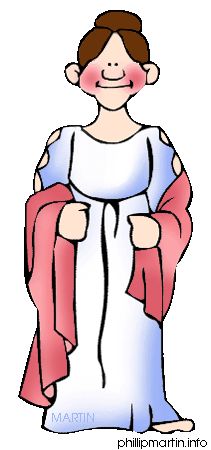
Achsah found herself in a situation where she needed something extra to make her land fruitful. Because of the good relationship she had with her father, she felt confident reaching out and asking him for a blessing. He responded by giving her double what she requested.
What areas in your spiritual life and/or natural life are unfruitful?� What do you need in order for that to change?� Because of your relationship with Christ, you should feel comfortable in asking God for what you need.� Because of your faith in him, you should feel confident that he will freely and generously supply whatever you need.
Joshua 15:20-32 – This is the inheritance of the tribe of the people of Judah according to their clans. The cities belonging to the tribe of the people of Judah in the extreme south, toward the boundary of Edom, were Kabzeel, Eder, Jagur, � Ain and Rimmon: In all, twenty-nine cities with their villages.
Joshua 15:33-47 - And in the lowland, Eshtaol, Zorah, Ashnah, � and Makkedah: sixteen cities with their villages. Libnah, Ether, Ashan, � Ekron, with its towns and its villages; from Ekron to the sea, all that were by the side of Ashdod, with their villages. Ashdod, its towns and its villages; Gaza, its towns and its villages, to the Brook of Egypt, and the Great Sea with its coastline.
Joshua 15:47-63 -And in the hill country, Shamir, Jattir, Socoh, � In the wilderness, Beth-arabah, � and Engedi: six cities with their villages. But the Jebusites, the inhabitants of Jerusalem, the people of Judah could not drive out, so the Jebusites dwell with the people of Judah at Jerusalem to this day.
In this chapter we find a list of 114 cities that stood in the territory of the inheritance of Judah. (Although it should be noted that later on, some of these cities will be reassigned to the tribe of Simeon and the tribe of Benjamin).

The list definitely served as a historical record. But it had another purpose as well – it was a challenge. The list was to inspire the people of Judah to continue trusting the Lord and fighting their enemies until all these cities were possessed by them.
The wars that Israel had already fought should have taught them one thing: God wanted Israel to have success and he was ready to assist them in both ordinary and supernatural ways to take possession of the land. The only thing left for them to do was to accept God's offer by rising up and going to war.
Yet, we find that many of the cities on this list remained in the hands of the Canaanites. We make particular note of the cities of Ekron, Ashdod and Gaza because these were three of the five cities of the Philistines, who were long and bitter enemies of Israel. Jerusalem, the holy city of God, was also on this list.
There can be no doubt that Israel was responsible for the failure in taking possession of these cities.� Had they done everything God commanded them and exerted all their strength against these opponents and still failed, dishonor would have fallen on God and his word.� We know that this could never be the case; God had promised that he would continue with them until they had full possession of all the Promised Land.

Therefore, our only conclusion is that Israel did NOT fully comply with all that God commanded and/or they did not continue fighting until their foes were vanquished. Whether through laziness, fear, weariness or unbelief they allowed many of the Canaanites to dwell alongside them in their inheritance.
How does this apply to us?
We know that the battles Israel faced in taking the Promised Land are a picture of the spiritual warfare we face in this generation.
With that in mind, what cities, territories or people groups has God assigned to your home church or your ministry?� Are you actively seeking wisdom and direction from God on how best to conquer that stronghold?� Have you drawn up a battle plan and set it in motion?
I admit, these are some really tough questions. But I encourage each one of us to consider them. We know that if we follow the leading of God, step out in faith and fight the enemy, God will give us victory. So, let's press our attack against the enemy and gain victory for Christ!
Let me offer you some encouragement, relief and strength:
Victory in our lives can only be obtained through a personal relationship with Jesus Christ. Have you established that relationship with him yet? It's not a hard thing to do; the bible tells us that if we confess that Jesus is Lord and believe that God has raised him from the dead, we are saved:
Romans 10:9-10 - � if you confess with your mouth that Jesus is Lord and believe in your heart that God raised him from the dead, you will be saved. For with the heart one believes and is justified, and with the mouth one confesses and is saved.
If you believe Jesus is Lord and you want to establish a relationship with him right now, please pray this prayer out loud:
Dear Jesus, I confess to you that I am a sinner.� I am sorry for all the wrong things I have done and I ask you to forgive me.� I believe that you are the Son of God, that you died on the cross and rose again, and that your blood paid the price for my sin.� I invite you to come into my heart and life and to be my Lord and Savior.� I commit myself to you right now.� Thank you for saving me from death and giving me the gift of eternal life.� Amen.
If you prayed this prayer and sincerely meant it, then you have received the gift of salvation from Jesus Christ! Please share this good news with some of your friends and family.
Your next steps are to find a local church to attend, read your bible and continue to fellowship with God in prayer. �As you grow in your faith, God will teach you how to fight for him in the spiritual realm.
